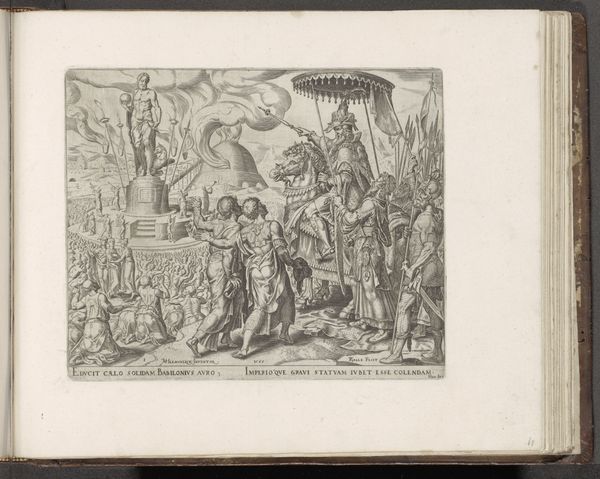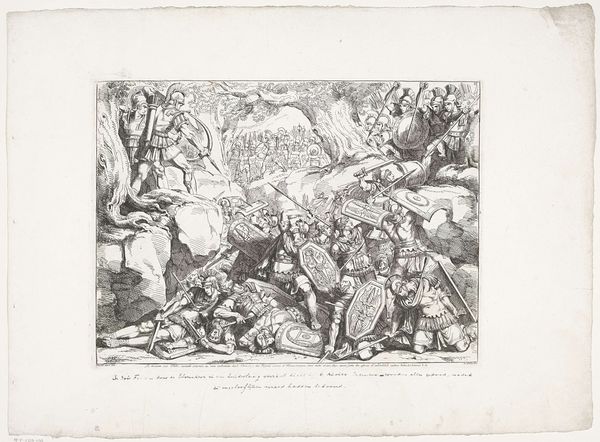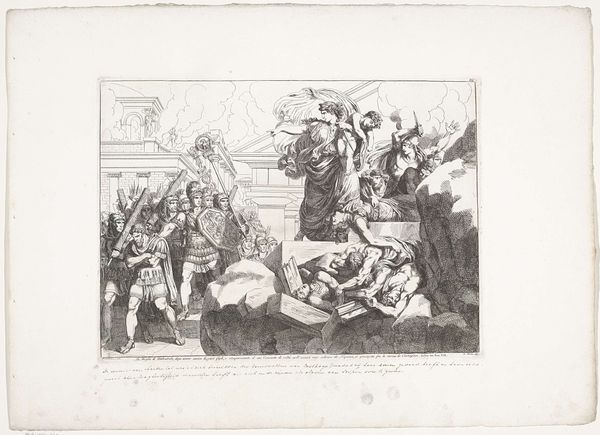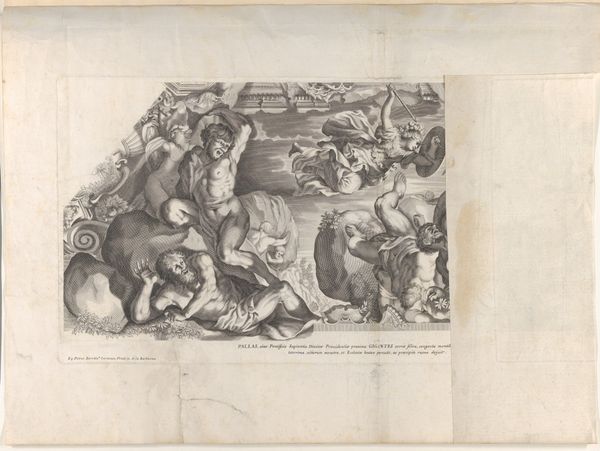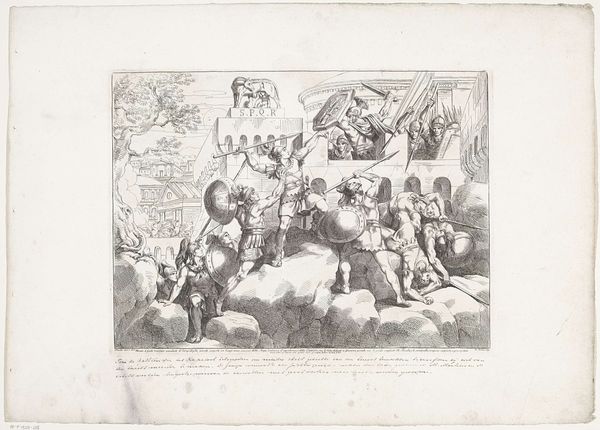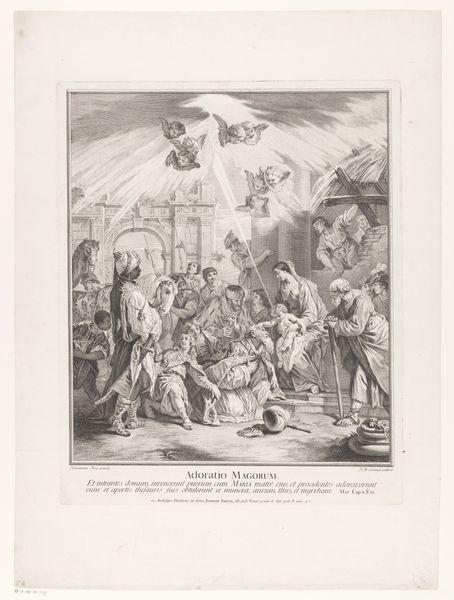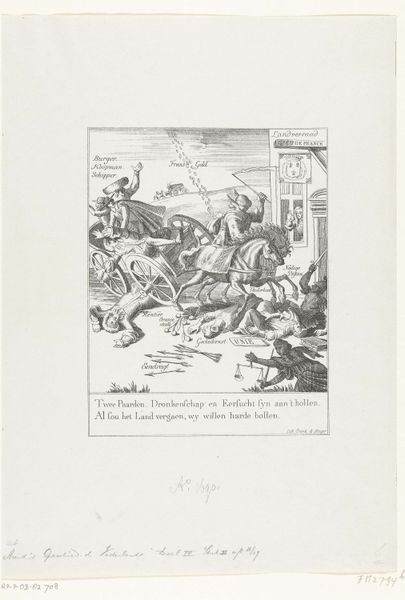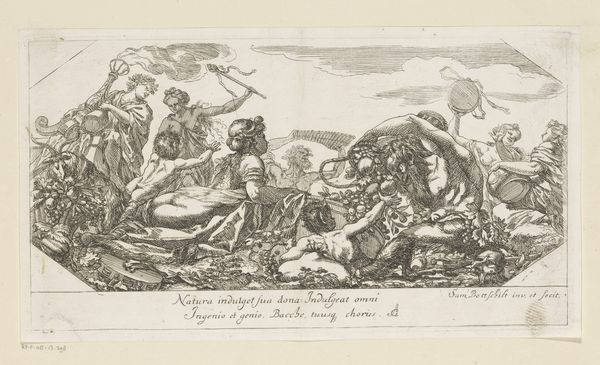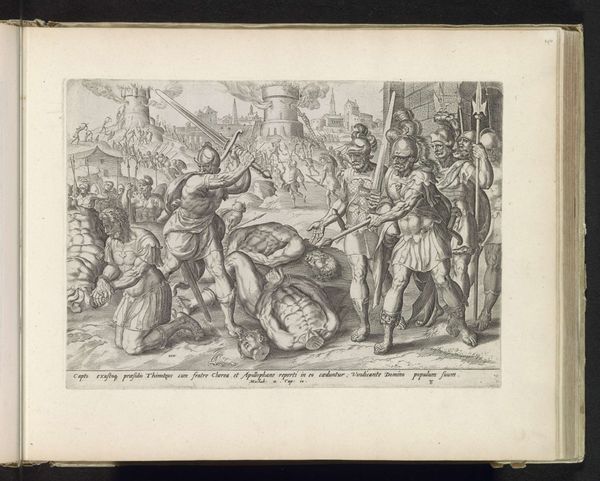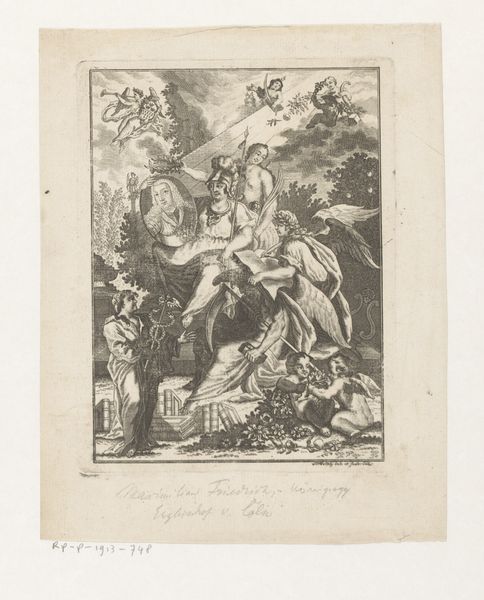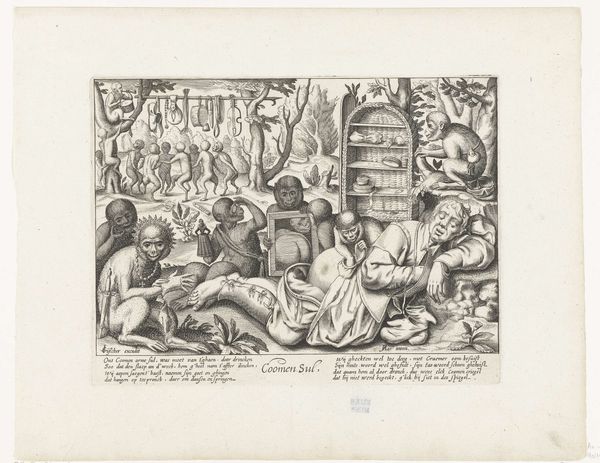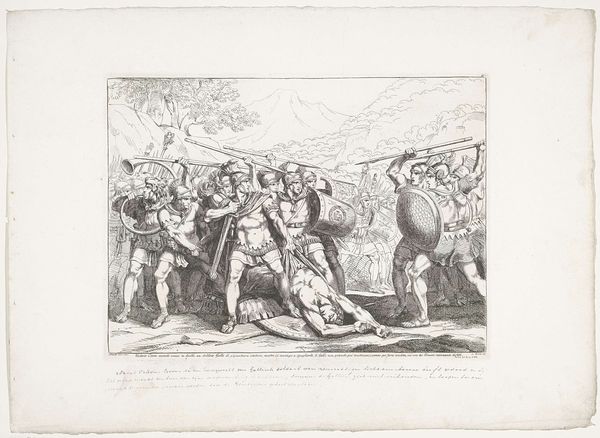
print, engraving
#
comic strip sketch
#
light pencil work
# print
#
caricature
#
personal sketchbook
#
idea generation sketch
#
sketchwork
#
ink drawing experimentation
#
romanticism
#
pen-ink sketch
#
sketchbook drawing
#
storyboard and sketchbook work
#
sketchbook art
#
engraving
Dimensions: height 266 mm, width 350 mm
Copyright: Rijks Museum: Open Domain
Editor: So, this is *Beroking van de Corsicaan*, or 'Smoking the Corsican,' an engraving from around 1813. The artist is anonymous, which I find intriguing. It's so packed with figures, and there’s a kind of frenetic energy to the scene. How do you interpret this work? Curator: This engraving offers a window into the political and social anxieties of the time. "The Corsican" of course, refers to Napoleon Bonaparte, whose rise and fall shook Europe. Caricatures like this one were powerful tools. Can you see how he's depicted being driven away by smoke, symbolizing ridicule and rejection? Editor: Yes, I see Napoleon almost evaporating. But who are the people creating all the smoke? They seem… festive? Curator: Exactly. This piece highlights the intersection of political commentary and national identity. The people reveling, drinking, and smoking, represent the Allied forces, particularly the Dutch, celebrating Napoleon's defeat. The focus on gin and tobacco emphasizes a specific Dutch identity in opposition to the French. Does this artwork speak to the broader relationship between cultural practices and political power, do you think? Editor: Definitely. It's more than just a funny picture. It reveals how everyday habits became part of a larger narrative of resistance and national pride. It also strikes me how alcohol and tobacco, both products tied to global trade, are used to make a political statement. Curator: Precisely. And the anonymity of the artist contributes to the sense of a collective sentiment, as if this is a shared feeling of relief and triumph amongst the Dutch. It prompts us to consider whose stories get told and who is left out of the narrative. Editor: This really shifts my perspective. I came in thinking it was just a historical cartoon, but now I see how it engages with ideas about national identity, political resistance, and even global trade. Thanks! Curator: And for me, it's a reminder that even seemingly simple images can reveal complex intersections of power and culture.
Comments
No comments
Be the first to comment and join the conversation on the ultimate creative platform.

